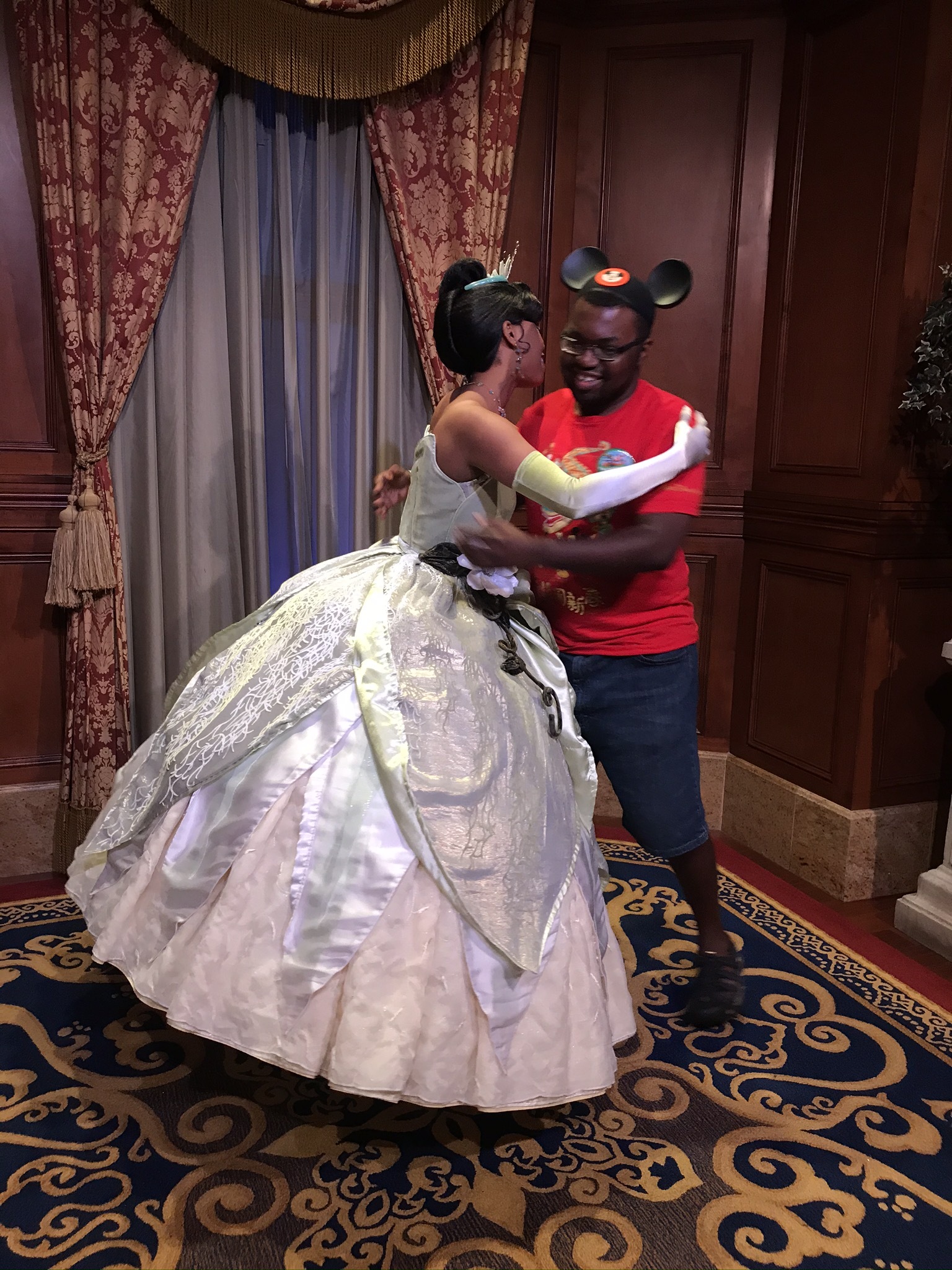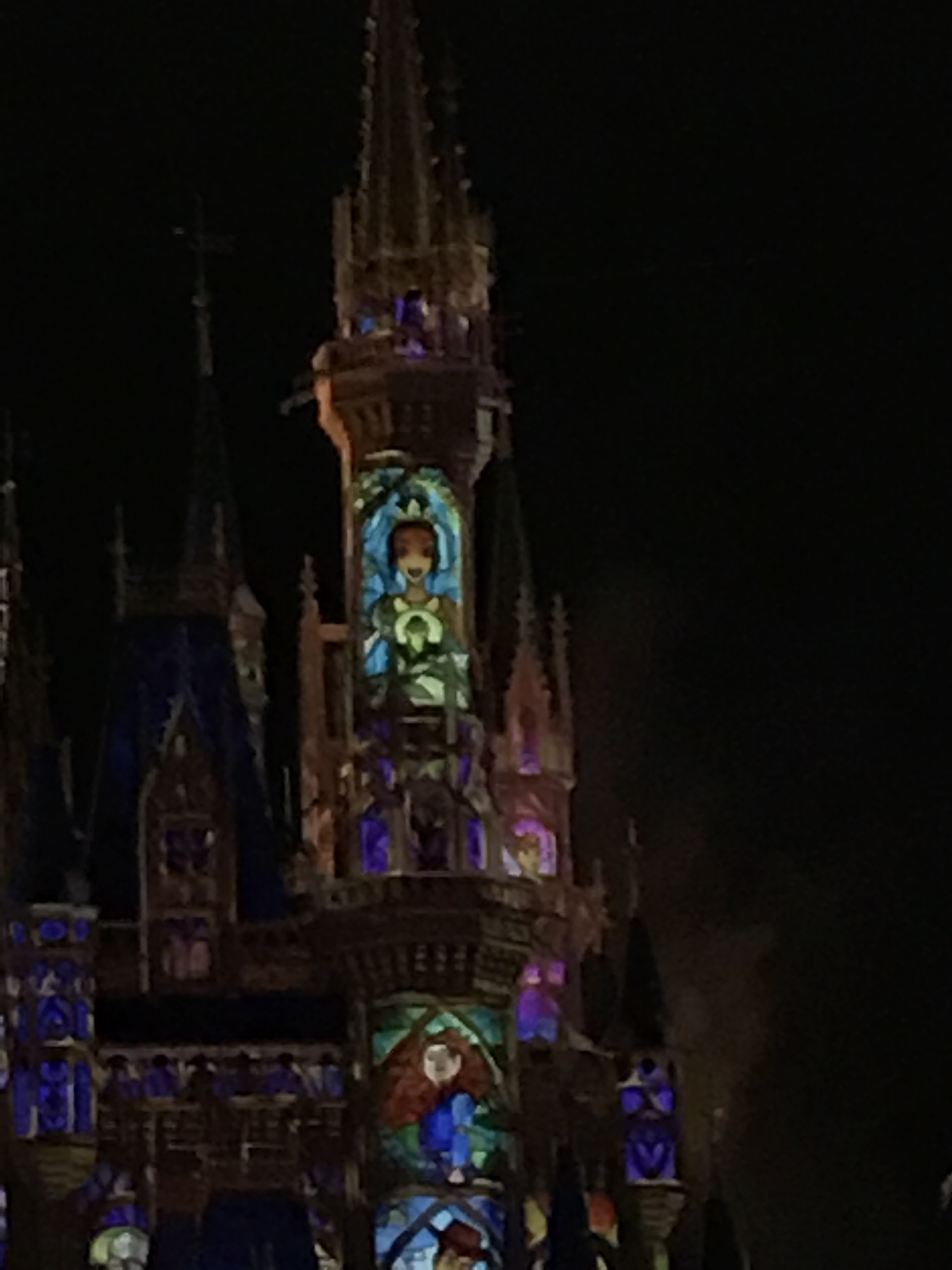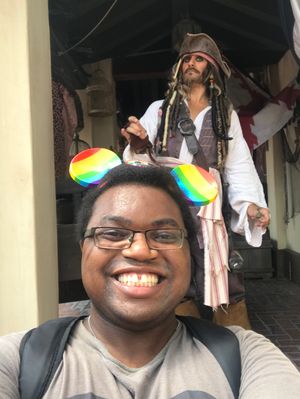
 In the movie Encanto, after a moment of exclusion and neglect from her family, Mirabel tries to remain composed and reassure herself that everything is fine. But seeing how her absence isn’t even noticed, she finally breaks down into the second song of the film- “Waiting on a Miracle”. A traditional “I Want” song, Mirabel opens up to the audience her pain and longing to be recognized as part of her family and that she is just as special as the rest. That she’s deserving of their love and acceptance. And in a powerfully emotional movement, as she moves around a frozen Abuela- who doesn’t seem to see nor hear her, no matter how close she comes or how loud she gets, Mirabel sings:
In the movie Encanto, after a moment of exclusion and neglect from her family, Mirabel tries to remain composed and reassure herself that everything is fine. But seeing how her absence isn’t even noticed, she finally breaks down into the second song of the film- “Waiting on a Miracle”. A traditional “I Want” song, Mirabel opens up to the audience her pain and longing to be recognized as part of her family and that she is just as special as the rest. That she’s deserving of their love and acceptance. And in a powerfully emotional movement, as she moves around a frozen Abuela- who doesn’t seem to see nor hear her, no matter how close she comes or how loud she gets, Mirabel sings:
Always walking alone
Always wanting for more
Like I'm still at that door longing to shine
Like all of you shine
All I need is a change
All I need is a chance
All I know is I can't stay on the side
Open your eyes, open your eyes, open your eyes
That scene made me bawl my eyes out for the second time in just the beginning minutes of the film because that pained longing to be recognized, to be authentically acknowledged and loved as yourself struck my core.
Growing up, I knew not only that I was lived by my parents but that I was also Black while they were not. My parents raised me with picture books of adoptive families and Black families that celebrated our differences while recognizing the love we shared for one another. And because my parents acknowledged and loved my Blackness, they did the best they could to ensure I had a connection to my culture and the local Black community. This included us going to dinners, picnics, and parties held by my parent’s Black friends and while I was playing tag or being passed around and gushed over ( I was a very tiny and adorable kid), my parents asked questions, listened, and learned from their Black friends and got lots of advice and feedback on how to keep me close to my culture and raise me to love the color of my skin, to not be ashamed of my background, and to be curious about my culture and history. They then took me home and allied what they learned and daily helped me to love, accept, and have pride in my Blackness. To love my curly hair, my brown eyes, my Brown skin- medical scars and all. And before I was two, my parents had also started to collect for the holidays Santa Clauses, angels, and nativity scenes with Black figures done by Black creators so that even in the whitest holiday, I could see myself in our home.
And as our family grew- first with two more African American kids, then two surprise birth kids, then two Taiwanese kiddos, and finally two siblings from Haiti- my parents followed that pattern of expanding their family to include those from the backgrounds of their kids, learning and being open to criticism, and moldering a home environment that reflected the diversity of their children from the books to the movies to even the holiday decorations and pictures on the wall. Now they weren’t perfect and some things slipped through the cracks as they are want to do so in large families, but I never will doubt my parent’s love for me nor that they saw me fully as I am, including my Blackness.
Which was the complete opposite of my experience outside our home, growing up in Utah, the home state and center of The Chruch of Jesus Christ of Latter-Day Saints- or Mormons as they’re mostly known as. And while many jokes about Mormons fall really flat or hinge on joking about our traumatic past of polygamy, one accurate joke is that the religion is predominantly still very White, especially in Utah. And like many Christians, Mormons ascribe to the racial ideology of colorblindness- meaning that they say they don’t see another’s race and treat everyone the same. Which the two hundred year history of he religious institution and the state of Utah itself says otherwise but that’s a whole other thing. Basically for the purposes of this post, the functioning of colorblindness meant that I was existing as a Black kid in religious settings, schools, and in friend groups where unless a major movie studio was producing a film with really famous Black leads, no one around me would know what I was talking about.
This was detrimental because I was growing up with The Proud Family, That’s So Raven, Fresh Prince of Bel Air, Family Matters, and other Black television shows that reaffirmed my Blackness and helped also bring awareness to issues within the Black community to white audiences because those shows were written, staffed, and directed by Black people. Our voices were being told and we controlled how we were portrayed and how to best represent ourselves. Meanwhile my friends and even teachers were watching the latest Hollywood drama about gang violence, sitcoms like Glee, or whatever Disney sports movie about desegregation that would lead them the next day apologizing for being White to me and even crying over the racism “of the past” in this country. Basically they were seeing my culture and my identity from the writing, directing, and spaces of white men and women while being ignorant to or disliking the actual shows and movies created by Black creators.
So when the Walt Disney Company announced they were producing an animated feature film starring their first Black Princess, I was beyond excited. Disney has been my longest and most core hyperfixation since I was even a baby. My routines were structured around Disney shows and movies, my meltdowns as an autistic were caused by many cancellations or changes to the schedule on Disney Channel/ Playhouse Disney, and Radio Disney or Disney’s Greatest Hits had to be on the car. And when we could go, my family frequently went to Disneyland which became my second home away from home- mostly because I loved how I felt there. I felt safe, respected, and seen in ways I didn’t feel except in the walls of our home. But while I loved Disney and loved Disneyland, there really wasn’t anyone who looked like me in the Princess shows or in the movies coming out beside Atlantis: The Lost Empire. So hearing about the new Princess Tiana made me so excited because in my mind it killed two birds with one stone- I’d get to see more Black people and Black culture in a Disney animated movie then I’d ever seen in my life, and my friends and the world would be exposed to and finally see our culture from the most famous entertainment company in the world.
But as soon as it came out voodoo- a common traditional faith practice in many American/West Indies communities of the African diaspora- was going to feature in the film, suddenly I- a jr high student- had to do months long campaigns to get anyone in my PWI interested to see the movie. I even had teachers IN CLASS ask for my opinion on this and having to fight for my life as a shy autistic Black kid to get those white Christians to care more about supporting the first Black Princess from a Disney movie than their own beliefs on voodoo. To support me and the other Black kids in our first Princess movie. And I know from the news stations we watched in school, to the Times kids articles we read and had in the library, and from the snippets of the news stations I saw at home that actually having this aspect of Black culture was overshadowing the actual fact we were getting a Black Disney Princess.
The months to the premiere to the movie though gave me hope things were changing- merchandise for the film was sold out, Halloween costumes for Tiana were gone before October, and characters were added to Disney on Ice. Then when the movie was released, my family loved it. Finally we had a Black Princess and she was amazing! My sisters loved Tiana and my Mom immediately on our last Disneyland vacation as a family purchased a Tiana ornament for our multicultural Christmas tree. The soundtrack was being constantly played around in our house and we were happy.
But as Tangled and especially Frozen came out, and Tiana’s existence in Disney parks, products, and entertainment was reduced to meet and greets and the occasional doll, those happy feelings started to disappear. Especially when finding pictures or dolls about Tiana that actually captured her African American features- especially her textured hair- was so hard to find that my Mom would become an emotional wreck when we found those that actually did. Especially when her merchandise was pushed to the back of Disney stores to a single half an aisle while all the other princesss got one or even two entire racks of merchandise that included play sets with every major friend and character from the film. Tiana was always by herself, or with her restaurant flyer, or just in her dress. And the cosplays at comic cons and conventions, especially D23- the largest Disney convention in the world? There are typically more Charlotte’s or Shadow Man’s then there are Tiana’s, let alone any Naveen’s. Don’t get me even started on the picture books and comics that were released that really lightened her skin tones! And when Ralph Breaks the Internet trailer premiered, Anita Rose herself had to join an outcry over how Tiana’s hair was not only done badly, but her skin was lighter shades and her facial features were tweaked to be less AFRICAN American. For a major motion picture film that was going to be released around the globe and be her second major appearance! And we don’t even talk about her appearances on the final horrible seasons of Once Upon a Time.
So by the time I did the Disney College Program in 2019, what I and many in the Black community thought was going to be the beginning of a buffet of cultural and meaningful representation had instead become such a scarcity desert that emotions were high over the shreds of representation we got. It’s why I cried seeing Tiana and Naveen incorporated so much into Magic Kingdom in Walt Disney World from the friendship faire castle show to the parade to Happily Ever After ( the now ended fireworks show). Because after almost decades of her being forgotten to the European princesses, she was finally getting her spotlight in the sun.
But now how does this relate to Encanto? Well, I said the second time I cried in the movie was Mirabel singing “Waiting on a Miracle”.
The first time was when I fully saw Antonio Madrigal. And when I saw this textured curly haired brown little boy, with big brown soulful eyes, and a love of animals looking at Mirabel with so much love in his eyes that he needs her, I burst into tears. Because I felt my own inner child just opening up and going “he’s like me. He really looks and acts like I did as a kid.” And I lost it because I had never felt seen before like that in my life.
There aren’t any sensitive Black little boys in the Princess and the Frog. Heck, there are no Black little boys or little Black girls seen in that movie beyond a baby Tiana and a dancing jazz boy. And it made me realize how shallow our representation really was in that movie. How much the colorblind perspective of executives, the director, the producers, the screenwriter, and the composer limited and reduce the depth and breadth of what could’ve been a fantastically Black film, especially if they hadn’t turned the two Black leads into animals for 90% of the movie and had an old white man magically Blackfish and steal the identity of the biracial Black prince. How rugged individualism drips in Tiana’s story and her message is work hard to achieve your dreams even though she nearly fails when trying to achieve her dreams alone. And how there isn’t any shown support for her dreams by the Black community, even when she’s clearly a beloved member of the community. We take care of our own. And speaking of family support, not only is Tiana’s family reduced to her just being from a single mother house but we get no mention of any of her extended family, who play a huge role in the Black community especially when a Black woman becomes widowed. Again, we take care of our own yet the film paints Tiana as lacking community support for her dreams! And how she seems to have no actual friends besides Charlotte and that makes you wonder where her people are at?! Where are her Black friends during this entire movie beyond the opening?! Why is no one in her community concerned when she disappears after Charlotte’s party and isn’t at work or her home?!
This and so many other issues- especially the trying to set up a colorblind society than hand waving at racism with the Ferner Brothers and the housing differences without saying WHY there’s such a difference, Dr. Facilier’s kinda minstrelsy design, the again demonization of voodoo, the “matters more on the inside than the outside” messaging- turned what could’ve been a well of representation and historical meaning, a potential cornucopia of merchandise, TV shows, cosplay opportunities, and characters for Black people to enjoy was into film that did our community and our first Black Princess so dirty that petitions had to be made to call for a “re-do” with an animated television series. That we had felt so wronged and felt Tiana and Naveen deserved so much better than from their own film that there was a demand for an animated television series or a sequel film to correct the mistakes and damage that had been done.
And that’s what lead to me crying the second time in Encanto with Mirabel’s song. For decades I had been begging and pleading for a miracle. That one day executives at Walt Disney Animation would hear my and other Black people’s pleas for us to have our own movie with Black characters. That we could stop having Whiteness steal our chances for representation and create controversy by misusing our stories ( Song of the South), watering down our culture (Princess and the Frog), and watering down the meaning of Soul, Jazz music, and the Black community while stealing our own Black bodies for white education (Soul). That we could have a movie based around an entire Black family and have conflicts within the community itself. That we could have an inclusive story trust created for the film itself that would ensure our culture would be represented authentically by having a diverse range of Black consultants on hand. That from top to bottom, left to right, back and forth, this production could be handled and staffed by Black people who could weave their lives experiences into the making of a film that’s a love letter to their culture, to their people, and to themselves.
That we could have a movie that dives deeper than just the food and music of a city but in the diversity of the food, the music styles, the dancing, the clothing, the hairstyles AND hair textures, the racial diversity in the Black community, and allow more of us to see ourselves shown in that film then through a lone princess. That one day the blinders and ear plugs of colorblindess could be removed instead for the prescription glasses and hearing aids of inclusion and we could finally be seen and heard.
And with Mirabel and Antonio, with Encanto itself, that this was always the possibility that Disney could’ve achieved if they had truly listened to us. That Encanto is everything I could’ve had with Tiana if inclusion was actually at the heart of the making of that movie instead of just making a Princess who is Black instead of a Black Princess. If Black people were allowed to write the screenplays, create the story trusts, have more influence on the developmental process, and oversee the music of the film instead of Randy Newman. That inclusion was always possible and that we didn’t need a miracle when it was- like Mirabel- right there in front of everyone.
